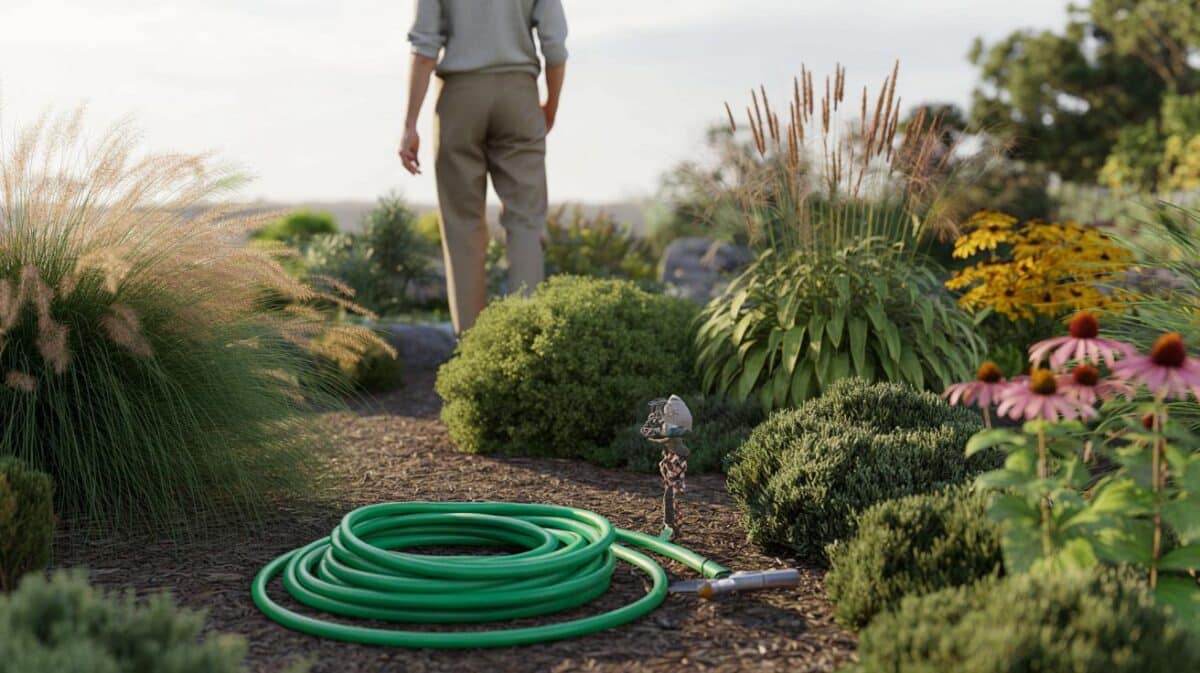October hands you a rare sweet spot: warm soil, cool air, shorter days. Put a ginkgo biloba in the ground now and you set up decades of low-maintenance shade and a reliable burst of gold each autumn. This ancient species shrugs off pollution, heatwaves and cold snaps, and it settles fast when planted at this time of year.
The ancient tree thriving in modern streets
From fossils to front gardens
The ginkgo biloba predates dinosaurs. Botanic records trace its lineage back more than 200 million years. It survived ice ages, city soot and even atomic blast zones, earning a reputation for endurance. In Europe and the UK, it moved from botanical collections into streets and squares because it copes with compacted soil and erratic weather.
One tree, many decades: a ginkgo can outlive you, your mortgage and your driveway, while asking very little in return.
Why urban conditions barely ruffle it
This tree tolerates pollution, wind tunnels and reflected heat from brick and tarmac. It handles temperature swings, late frosts and brief droughts once established. It sets a deep anchor early, then builds a steady root network. That root system is strong but not aggressively invasive, so it suits verges, front gardens and pavements when spaced sensibly.
October is your window: how to plant for a fast start
Site, soil and spacing that work
Choose full sun for the boldest autumn colour. Any free-draining soil works, from clay loam to sandy mixes. Avoid waterlogged patches. Allow 5–6 metres from buildings for standard forms, less for compact cultivars. In small gardens, pick a narrow or dwarf selection to keep pruning minimal.
Plant while the soil still holds summer warmth: roots keep growing for 4–6 weeks before winter dormancy.
Step-by-step planting in under an hour
- Water the container 30 minutes before you start.
- Dig a hole twice as wide as the pot and no deeper than the rootball.
- Loosen the base and sides; mix garden soil with well-rotted compost at 3:1.
- Set the tree with the collar at finished ground level; straighten the stem.
- Backfill, firm gently in layers, then water 10–15 litres to settle soil.
- Add a 5–8 cm mulch ring, leaving a clear gap around the stem.
- Stake low and flexible in windy spots; secure with a soft tie.
Water weekly through the first spring and summer unless rain gives 20–25 mm. Remove the stake after 12–18 months once the trunk can hold its line.
Gold every autumn: how to get the colour you paid for
Light, pruning and plant partners
Full sun drives the richest yellow. Keep pruning light. Remove crossing or storm-damaged wood in late winter. Leave the natural shape; it matures into a calm, upright form. For a design lift, pair that yellow with deep purples and silvers. Heuchera, autumn asters, salvias and grasses frame the showy leaf fall without stealing the scene.
No sprays, no fret: ginkgo resists most pests and diseases, so you skip routine chemicals and save time.
Season-by-season value
Spring brings delicate fans of pale green. Summer gives a cool canopy and filtered light. Autumn flips the switch to gold, then scatters a bright carpet you can leave as mulch or collect for leafmould. Winter shows a neat, architectural silhouette.
Biodiversity, with smart choices
Shelter, structure and a living understory
Ginkgo is wind-pollinated, so insects don’t flock to its flowers. Yet the canopy offers shelter, perches and stable microclimates. Boost wildlife by planting nectar sources and seed-bearing perennials beneath it. A living mulch of low grasses and native flowers feeds pollinators while keeping soil cool and rich.
- Leave a light leaf layer under the tree to feed soil life.
- Add late-season nectar plants to bridge the autumn gap.
- Keep mulch organic to support worms and beneficial fungi.
Pick the right form for your space
| Cultivar | Habit and height | Notes | Best for |
|---|---|---|---|
| Princeton Sentry (male) | Narrow, 12–18 m | Columnar; tidy streetside choice | Small urban gardens, avenues |
| Autumn Gold (male) | Broad pyramidal, 12–15 m | Reliable colour; strong framework | Lawns, focal specimens |
| Saratoga (male) | Graceful, 10–15 m | Long-lobed leaves; refined look | Court yards, design-led gardens |
| Mariken | Dwarf globe, 1.5–2 m | Slow; fits large pots | Terraces, balconies |
| Troll | Dwarf, 1–2 m | Compact; minimal pruning | Small beds, containers |
Choose male selections for pavements and entrances. Female trees drop large seeds with a strong odour in late autumn. If you inherit an unknown tree, you may not know sex for several years, so position with that in mind.
Care that fits a busy week
Water, feed and mulch made simple
Year 1 needs consistency. Water deeply once a week in dry spells. Skip fertiliser unless the site is very poor; a spring top-up of compost is enough. Refresh mulch annually to hold moisture and suppress weeds. From year 2, most trees need only drought-response watering.
Practical spacing and safety notes
Keep 2–3 metres from drains and 1.5 metres from fences for standard forms. In high-wind corridors, a low stake and tie prevent rock at the base. Avoid planting in boggy pockets; ginkgo dislikes prolonged saturation.
How it stacks up against other street-tough trees
Resilience and running costs
- Pollution tolerance: high; leaves shrug off grime with rain.
- Drought tolerance: high after establishment; modest watering for year 1.
- Cold hardiness: reliable across the UK, including sharp frosts.
- Pruning need: low; structural tidy every few years at most.
- Pest pressure: low; routine spraying unnecessary.
For many households, total care time averages under two hours per year after establishment.
Money, timing and a quick plan
What you’ll spend and when you’ll see results
Budget £40–£120 for a 1–2 m container-grown tree, depending on cultivar. Larger specimens run higher. Plant now and expect a flush of new growth in spring. Young trees often add 30–40 cm of height per year in good conditions. Colour arrives reliably each autumn from year two or three.
Extra notes gardeners ask for
Container growing and compact plots
Dwarf selections sit happily in 40–60 litre containers with a loam-based compost. Water little and often in summer heat. Repot every 3–4 years, stepping up pot size gradually. Even in pots, you still get the golden leaf show.
If you want maximum wildlife value
Pair ginkgo with nectar-rich natives and a small water source. A bird bath, late-flowering ivy, sedums and seed heads left over winter draw insects and birds that then use the ginkgo as cover. This simple mix turns a resilient tree into a micro-habitat.








